This page tries to reply to the question “is chatoyance affected by drying?”
An Elm heartwood sample was cut from a log that was felled on the same day, and the sample was sanded to 1500-grit and submitted to chatoyance measurement within 10 minutes of its cutting.
PZC chatoyance and sample mass were measured several times across a one-month period, after which sample mass was completely stabilized. The sample was kept indoor and shielded from direct sunlight. Then, after 40 days, the sample was re-sanded removing a thick surface layer to ensure that new, unoxidized surface is exposed, and measurements were repeated for 3 days.
The chart below provides a summary of the the results:
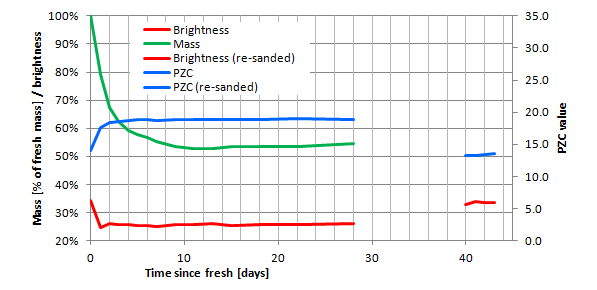
Elm shows a significant air-related darkening effect, which is evident looking at the brightness data (brightness on day 1 is much lower than on day 0, and then it reaches stabilization).
PZC chatoyance is also clearly affected by this change, as it increases significantly from day 0 to day 1, and then it stabilizes after day 3.
Sample mass takes about 10 days to reach a stabilized value (i.e. the wood is dry) with significant changes still occurring after day 3.
It is therefore concluded that chatoyance is not directly affected by drying, but it is surely affected by air-exposure related darkening. This is confirmed by the fact that after re-sanding, the surface is brought back to higher brightness and chatoyance is restored to its initial “fresh cut” value (around PZC 13). Interestingly, the surface sanded after drying did not darken after air exposure.
This test should be repeated on a non-darkening wood specie.
Gifs below show the appearance of the Elm samples at various drying stages:




After 43 days – 3 days after re-sanding
The same process was applied to a Black Locust sample kindly provided by N. Borlin; in this case the log was cut and then packaged in a sealed bag and milled after 3 days.
The results are summarized in chart below:
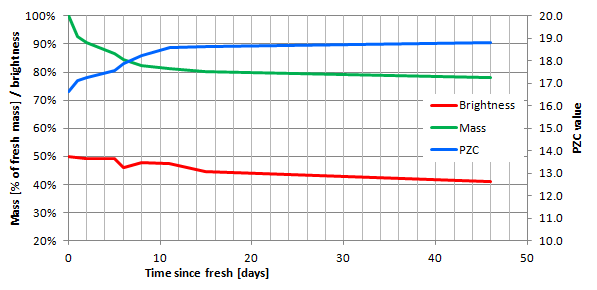
Again mass is substantially stabilized in 10 days, together with chatoyance (PZC), while brightness keeps on changing over time. Pictures below show the initial (fresh) and final look of the sample:


The same process was applied to an Acacia Dealbata sample kindly provided by D. Valentini; in this case the log was milled 2 days after felling and the analysis started one day after milling.
The results are summarized in chart below; the last drop in PZC and rise in brightness is due to final sanding to 1500-grit.
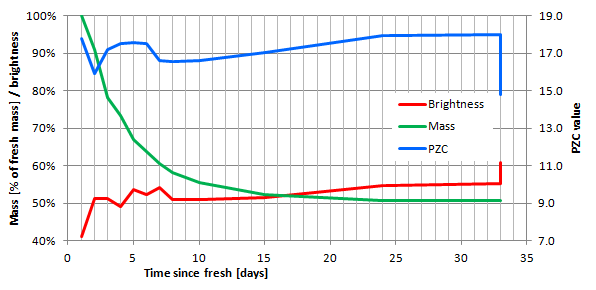
Mass is substantially stabilized in 20 days, together with chatoyance (PZC), while brightness keeps on changing over time. Pictures below show the initial (fresh) and final look of the sample:



The same process was applied to samples from Kaki (Diospyros Kaki) and to European Walnut (Juglans Regia) samples kindly provided by Segheria Proverbio; the log was milled the same day of felling and the analysis started on the same day.
The results are summarized in chart below; the last drop in PZC and rise in brightness is due to final re-sanding to 1500-grit.
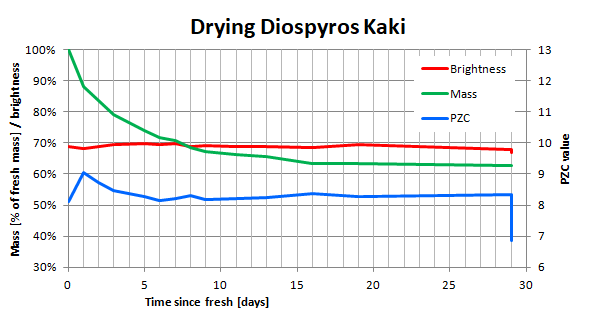



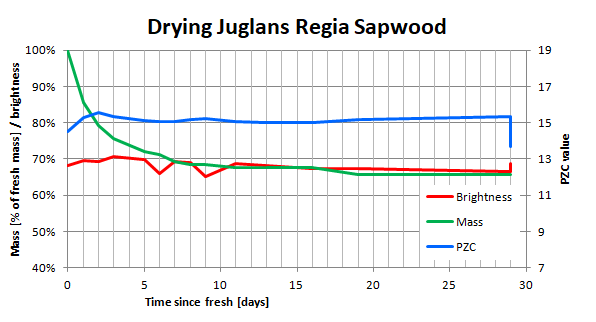



The same process was applied to a Silver Birch (betula pendula) log.
The results are summarized in chart below; the last drop in PZC and rise in brightness is due to final re-sanding to 1500-grit.
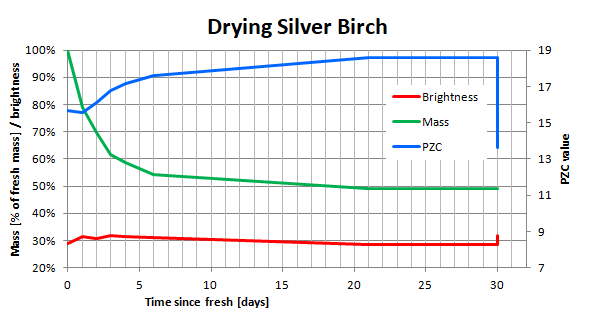



Want to know more? Get Woodworker’s Guide to Chatoyance!

Available on Amazon in 12 countries – just click on your flag below…
… and enjoy the read!











